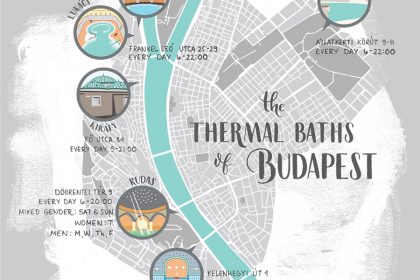

CONTACT US
1052 Budapest, Jane Haining Quay, Dock 11.
Customer support is available daily from 9:00 to 22:00.
Budapest, Jane Haining Quay, Dokk 11, 1052

Hot and cold springs of the Szemlő Hill were known and enjoyed by even the ancient Romans. In the XII. century, orders of knighthood who dealt with patient care (such as Hospitallers) settled in the region. They also built a monastery beside the hospital and the bath. Later, during the Turkish invasion, baths of the hill were also popular because the culture of baths is a significant part of Muslim culture ( such as the the Tomb of Gül Baba, which is the northernmost Muslim place of pilgrimage) . Moreover, the power of these springs was used in the producing of the gunpowder and milling of grains. These latter items were found by Szokullu Mustafa who was the pasha of Buda. After the recapture of Buda in 1686, the exchequer of Bécs dealt with all baths, and the significance of them started to reduce.

The reconstruction of the buildings was made in the second part of the 19th century. It was started by a gristmill from Old-Buda, then in 1884, Fülöp Palotay broadened the building. He delegated the work of design to Rezső Ray. The name of Lukacs was given in 1893 and its success story has started. Before the opening of Gellért Bath, it was the most modern and most popular bath in the country. Not only Hungarians but also several foreigners visited the institute. It was also the center of the social life of the artists; Gyula Illés, István Örkény or Emil Grandpierre Kolozsvári writers, Zoltán Zelk poet, or Zoltán Kodály composer and ethnomusicologist all loved Lukacs Bath. It’s also mentioned in several novels. For example, a novel called ‘School at the Frontier’ written by Géza Ottlik starts here. Péter Nádas also mentioned the building in his ‘Parallel stories’. According to a touching habit, recovered patients placed thanksgiving tables on the building. Unfortunately, most of these tables were destroyed during the 2nd world war. Later, the intact items were built into the walls.
The building has been rebuilt several times so it provides a quite eclectic view nowadays. During its history, it had even Moorish features but they and the characteristic four towers absolutely disappeared. The current appearance is created in 1921 by Rezső Hiklisch but the building was continuously broadened until the 1970-s. It is an interesting fact that one tower of the original Turkish gunpowder and grain mill can be seen in the bath.
Its garden is also worth some words. Several old sycamores provide some romantic feeling. You can find also two memorial benches there; both of them are presents of the descendants of regular visitors. These visitors were called György Schiller and Júlia Lux. We recommend watching the statue of the ‘Bather nymph’ which was made by Lajos Rápolthy. It was transported to the Lukacs Bath from the Dandar Bath in 2013.
They satisfy several requirements; they serve medical, sport, or wellness aims. If you want you to cure your diseases, we recommend the three hot pools (32, 36, 40°C) or the steam room (The hottest pool is an interior pool with 42°C, and it takes place in the Rudas Baths. For the visitors’ pleasure, there are an adventure pool with jacuzzi, an orange wall made of Himalayan salt, an igloo, multiple versions of saunas (even a naturist one), and a tepidarium.

The water of the bath is from the János Molnár Cave which is 6 km long and its water is 30 m deep. The existence of this cave was mentioned in a medical newspaper in 1858 and it received its name its first explorer. Ferenc Papp cave expert had a great role in the later discovery of this cave.
This thermal water heals degenerative and inflammatory diseases of joints but it also can help patients who suffer from deformations of the backbone, disc herniation, or osteoporosis. If you drink it, you can cure gastrointestinal diseases, inflammation of the kidney pelvis, or prevent producing stones of the kidney.
If you are interested, visit Budapest, City of baths and read about all the strand and spas of Budapest.